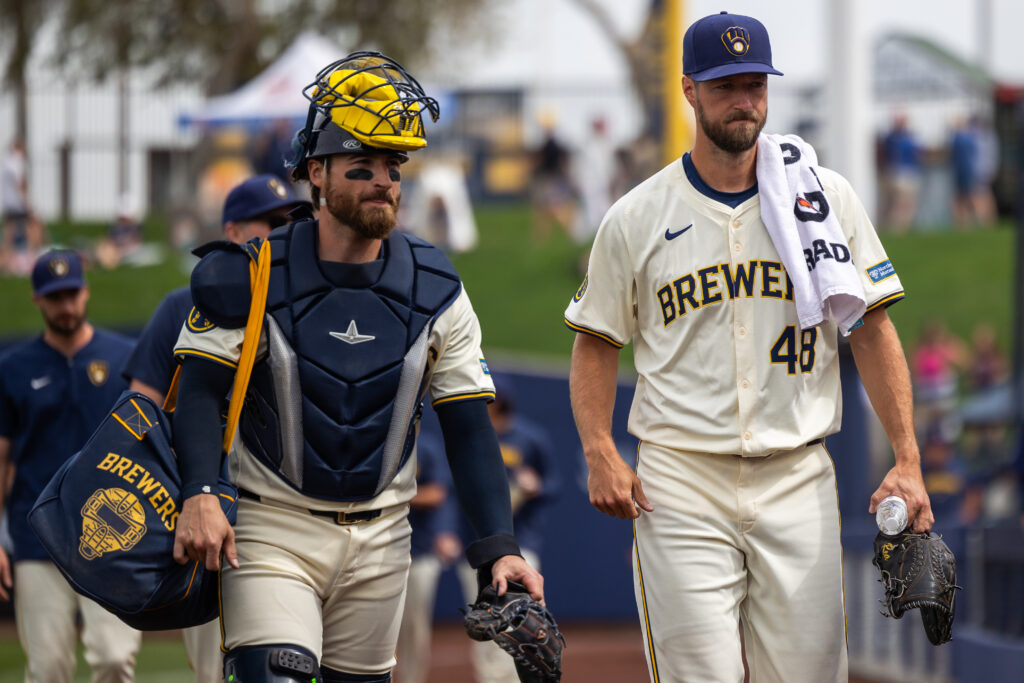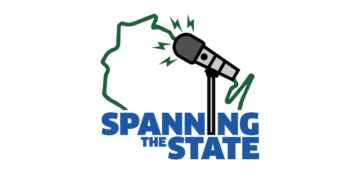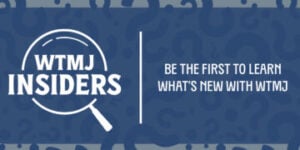Closing is hard
I’ve said for a very long time: the Brewers current run of elite closers is ridiculous. Going back to 2018, no one in baseball has more saves in the game than the Brew Crew. Of the 255 saves since the start of that NLCS run, Josh Hader had 125, Devin Williams has gathered 54. Sprinkle in Jeremy Jeffress and Corey Knebel, this has been their calling card.
Go even further back to Trevor Hoffman’s penultimate season in 2009. Only three teams have more saves than the Brewers (Yankees, Rays, Dodgers) and the Brewers have strung a web of Hoffman to John Axford to Francisco Rodriguez to the previously named stars (and Jim Henderson’s 28 saves in 2013).
Matt Arnold put it perfectly on Thursday “any time you lose a pitcher the caliber of Devin, it’s a huge loss.”
Yeah, no kidding.
This team plays close games all the time. 62% of games since 2018 for the Brewers have been decided by three runs, win or lose. The Brewers are 300-228 (.558) in such games which is the third-best winning percentage in baseball – and 22 more wins than the Cardinals, the only other NL Central opponent over .500 in such games.
Needless to say, this is the Brewers strength during this current window of sustained success. Missing Devin Williams for the next 2-3 months will be frustrating, but Pat Murphy’s vision of a fireman helmet being handed from closer to closer could be intriguing.
Last season, all three of the natural replacements for Williams recorded their first career saves: Joel Payamps, Elvis Peguero, and Abner Uribe. Even southpaw Hoby Milner has never recorded a save in his career.
Even with the best case scenario for Devin’s health and recovery, the current prognosis doesn’t have him returning until the end of June. The fire brigade will have to rotate captains until the fire chief returns.
Bullpen thoughts
With all of the above being said about Devin, this could change things for the Brewers’ pitching staff and bullpen beyond the obvious. We have reason to believe the Brewers were planning some “non-traditional” roles for Jakob Junis, Aaron Ashby, Joe Ross, Bryse Wilson, and others. But now, leverage arms are needed, which could impact who makes the club.
With 13 pitchers, the current “locks” on the starting staff would be: Freddy Peralta, Colin Rea, Wade Miley (if healthy in-time for Opening Day), and DL Hall. The fifth and maybe sixth spots go to the names mentioned in the previous paragraph to be tandem outings.
Let’s say you carry all eight names I’ve mentioned already. That leaves five “traditional” bullpen spots until Williams returns. Well, you’d figure the “locks” in this category are Abner Uribe, Hoby Milner, Joel Payamps, and Trevor Megill.
That would leave one spot to be battled for between JB Bukauskas, Bryan Hudson, and Taylor Clarke – all of which with at least one option year remaining – meaning they can be shuttled back and forth from Nashville no more than five times this season.
If the Brewers attempt a sixth option for a player in a season, they are subjected to the waiver wire where the player can be claimed to another team. It will be very important to keep track of these option-able arms, given how flexible the Brewers staff will need to be for the first few months of the season.
Furthermore, the schedule plays into these decisions. The Crew has three off days in the first eight calendar days of the season, then play three consecutive stretches of 13 games in a row between off days. Starters like Robert Gasser and Janson Junk would be key depth for the Brewers to make “spot” starts over these stretches.
One last thought for the roster relief that Devin’s injury provides: he can be placed on the 60-day IL, which would free a spot on the 40-man roster – a spot that Gasser would need to make the club at some point.

We need to talk about Eric Haase
Looking back at Eric Hasse’s previous spring training performances, he seems to play really well in March. There’s an argument to be made for catchers feeling their freshest at the start of the year, and the unrelenting nature of baseball’s most bruising position wears down all bodies by the end of the season.
Let me give you Haase’s stat line this spring: .409 BA / .480 OBP / .727 SLG in just 25 plate appearances. He’s connected on nine hits – four of them homers. I, a statistician at heart, know this sample size is far too small to consider carryover into the regular season.
Especially given Haase has struggled at the plate last season to the tune of an OPS below .530 and the worst exit velocity metrics of his career.
I caught up with Haase for last week’s episode of Brewers Weekly, understanding he’s in the unenviable spot of thinking he was the backup catcher for most of the offseason, just for the Brewers to then sign Gary Sánchez during the first week of camp.
“I don’t see it as competing against Gary, I see it as competing against myself,” Haase said. “If I go out there and handle what I can handle, I think I have a lot to offer a big league team.”
Manager Pat Murphy has sung his praises all camp. “He’s been a joy, he’s been great to be around,” Murphy said. “He’s a pro in every sense of the word, he’s a team guy and a dream to have him around. I’d want him on any team I’m part of,” he continued.
Could a three-man weave behind the plate work? The Brewers last carried three catchers was briefly in 2021 when Pedro Severino returned from a PED suspension. His 80-game absence caused the hurried trade of Victor Caratini the night before the season started.
Haase and Sánchez both have pedestrian blocking numbers, while Sánchez has the slight edge in framing. Granted, no one has more passed balls than Sánchez since his debut season in 2016, and he seems to be destined for a DH role vs LHP.
So could Haase make this club with less than two weeks to go? Let’s unpack that.
Lineup thoughts
I tweeted this before the night game against the Cubs on Tuesday night because that lineup (minus a name or two) seemed pretty darn close to an Opening Day lineup.
The more I dive into that “wild” lineup, the more I like it. Obviously, that lineup’s success is contingent on Sal Frelick getting regular season starts at third base and health by everyone else.
Another tweak I could see is swapping Joey Wiemer for Blake Perkins with the intent of Wiemer getting everyday at-bats in Nashville to refine his revamped swing mechanics.
That lineup also features a three catcher formation. Where would the Brewers be exposed and how would Pat Murphy have to manage those games?
Well let’s say he wants to make a defensive sub late in the game for Frelick at third with Joey Ortiz. Would you double switch it so Sal remains in the game, to say, right field? Then Mitchell comes out of the lineup and Ortiz hits there?
Or what if you have a situational lefty come in to face Turang in a big spot? Are you cool with rolling the dice with Sal at third for the final frames and use Ortiz to pinch hit for Turang? There are plenty of factors that go into platoon decisions.
Or how about days that the DH spot is not occupied by Sánchez but rather Christian Yelich? You find yourself with no coverage at third base, assuming Ortiz is starting at third while Frelick plays the outfield for Yelich – unless you use Blake Perkins in the starting lineup.
My brain is already hurting and it’s only March. These are going to be a very interesting final two weeks of camp.
Cactus League stadiums
I get asked often which Cactus League stadiums are “must-see” when coming to visit the desert. In case you weren’t aware, I’m virtually an Arizona-native (born in Texas, but spent most of my adolescence and college here) and have seen all that the league has to offer.
I will also be clear: I don’t have any takes on concessions or drinks or other fun activities within the ballpark. This is strictly, “If I wasn’t sitting in the press box, this is where I want to cover a game.”
#10 Tempe Diablo (Angels)
This is the oldest ballpark in the league, but still has some charm. While the backdrop of Tempe Mountain and the buttes do their best to overshadow I-10 beyond right field, the scoreboard is very lackluster and underwhelming. A redeeming quality is the unique berm style that wraps around the left field foul pole.
#9 Goodyear Ballpark (Guardians and Reds)
This really isn’t that bad of a park, but in my eyes it is too concrete-heavy given it is only 15 years old. Not enough berm seating in my eyes and in favor of an oversized party patio in right field. I feel the seats are fine, but the stadium is just too “big” for the location and teams it serves.
#8 Camelback Ranch, Glendale (Dodgers and White Sox)
You must pack extra sunscreen for this park. While the view of mountains in the distance is lovely, it comes at the expense of facing due east instead of north-northeast … meaning there is virtually no shade in your seats at this park. The “rust” look on the team offices is a fun southwestern touch, yellow seating blinding your undereyes is not as fun.
#7 Peoria Sports Complex (Mariners and Padres)
Recent upgrades to the jumbotron have helped its case to rise, and it’s really a fantastic park for fans when it comes to amenities and a 360º concourse. What hurts against Peoria is the reliance on Bell Road, Arizona’s worst planned major street. Prepare for traffic no matter what.
#6 Surprise Stadium (Rangers and Royals)
If it wasn’t so gosh darn far from everything else in the league, it would be a bit higher. This is a quintessential perfect sized spring training park. The berm goes from foul pole to foul pole, one concourse for main seating, no bleachers, and great access to the backfields and batting cages.
#5 American Family Fields of Phoenix (Brewers)
If you’ve been to AFFOP, you know it is an underrated gem of the Cactus League. Again, pole to pole berm seating, a good amount of shade down the first base line, great access to the players with the clubhouses down the line. I understand parking can be a bit of a hassle walking through the backfields, but at least there are shuttles available.
#4 Sloan Park, Mesa(Cubs)
It was built for the Cubs, by the Cubs, and serves the most popular team in the league. It is large and modern and meant to host as many people as possible. The berm is packed every game, the “Wrigley charm” isn’t present here but they have photo ops like a massive Clark/Addison marquee replica.
#3 Scottsdale Stadium (Giants)
The second oldest park in the league is in arguably the best location to spend an entire day in the heart of Old Town Scottsdale. You may think parking can be tough, but the trolley system they have is rather impressive. The seats are extremely close to the action, and plenty of variety.
#2 Hohokam Stadium, Mesa (A’s)
The Cubs left east Mesa for west Mesa 10 years ago, but the A’s have made this park the most underrated stadium in the league. It fits all of my requirements: shade access, pole to pole berm seating, a full concourse of activities and shops for the family. Put it on your list for sure.
#1 Salt River Fields at Talking Stick, Scottsdale (Diamondbacks and Rockies)
This is the crown jewel of the league and maybe all of spring training. Built with the biggest berm in the state, with both standard box seats and upper level suites, fans can find plenty of space to explore or hang out. An added perk is the direct access to the backfields down the lines, no need to exit and re-enter, you’re still within the park. The park opened while I was in high school and hasn’t aged a day.
Odds & ends
41 players in camp (+1 on 60-day IL)
21 pitchers | 3 catchers | 11 infielders | 6 outfielders
Upcoming schedule
Sunday, 6:10 PM CDT, at Kansas City (Surprise) – 620 WTMJ
Monday, 3:10 CDT, vs Los Angeles, AL – 94.5 ESPN MILWAUKEE
Tuesday, 3:05 CDT, at Cleveland (Goodyear) – 620 WTMJ
Random stat of the day
It’s nearly certain that Gerrit Cole and Blake Snell won’t start Opening Day (Cole due to injury and Snell not yet signed). The last time the reigning Cy Young winners did not start Opening Day was 2005 (Roger Clemens & Johan Santana). Before that was 1982 with a Brewers tie-in, Fernando Valenzuela and Rollie Fingers!

























